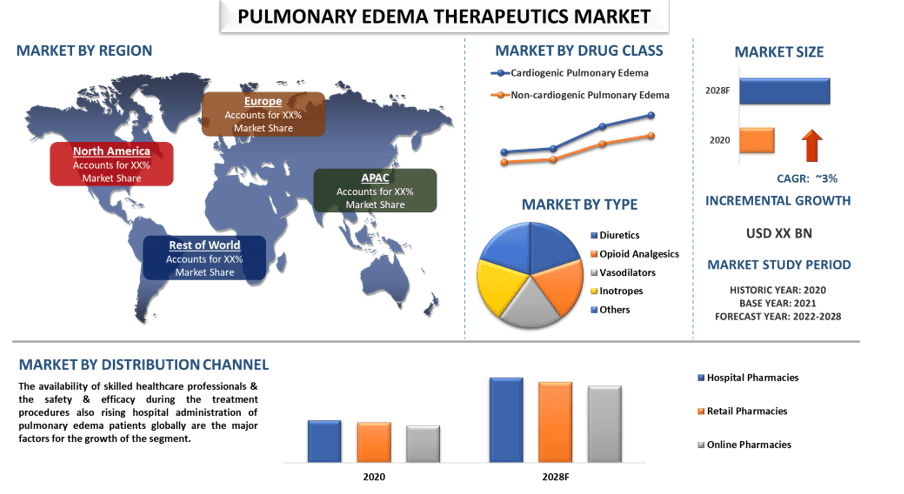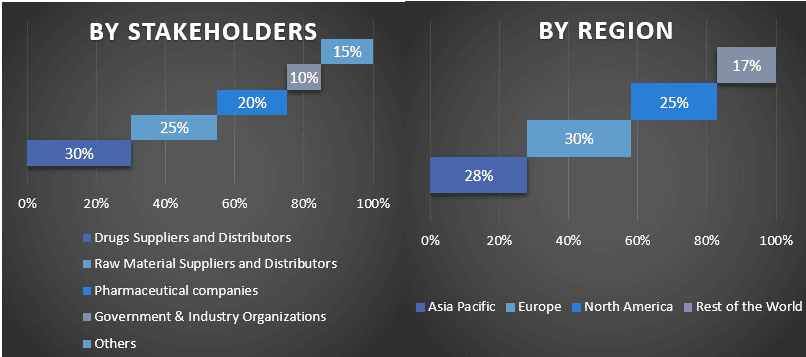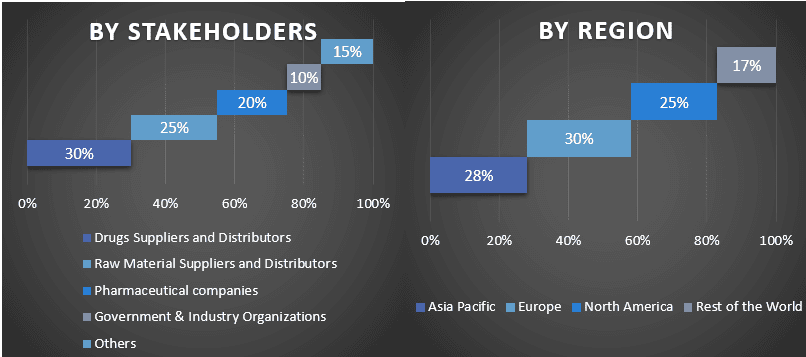Emphasis on Drug Class (Diuretics, Opioid Analgesics, Vasodilators, Inotropes, and Others); Type (Cardiogenic Pulmonary Edema and Non-Cardiogenic Pulmonary Edema); Distribution Channel (Hospital Pharmacies, Retail Pharmacies, and Online Pharmacies); Region/Country.

The global pulmonary edema therapeutics market is expected to grow at a significant rate of around 3% during the forecast period 2022-2028. A medical condition known as pulmonary edema is brought on by the accumulation of too much fluid in the lungs’ air sacs. The majority of the causes of fluid accumulation in the lungs are underlying medical conditions like congestive heart failure. Pneumonia, injury to the chest wall, exposure to toxic gases or certain medications, and exercising at high elevations are all potential causes of pulmonary edema. There are some major factors such as the worldwide rise in pulmonary edema and other conditions like pancreatitis, heart disease, and kidney failure. In addition, the market’s expansion is anticipated to be aided in the coming years by the expanding global geriatric population. On the other hand, it is anticipated that factors such as a lack of awareness, treatment affordability, and a low per capita healthcare expenditure will impede the expansion of the market. For instance, according to the World Population Ageing Report 2019 by United Nations (UN), In 2019, there were 703 million persons aged 65 years or over in the global population. This number is projected to double to 1.5 billion in 2050.
AbbVie Inc., Apotex Inc., Bausch Health Companies Inc., CMP Pharma Inc., Johnson and Johnson, Lupin Ltd., Novartis AG, Pfizer Inc., Sanofi, Teva Pharmaceutical Industries Ltd. are some of the key players in the market. Several M&As along with partnerships have been undertaken by these players to facilitate customers with hi-tech and innovative products/technologies.
Insights Presented in the Report
“Amongst type, cardiogenic pulmonary edema category to witness robust CAGR during the forecast period”
Based on type, the market is segmented into cardiogenic pulmonary edema and non-cardiogenic pulmonary edema. Among them, the cardiogenic pulmonary edema category is to witness a higher CAGR during the forecast period. This is mainly due to the high prevalence of cardiovascular diseases like carotid artery disease, cardiomyopathy, heart valve issues, and hypertension are major contributors to this market’s expansion. For instance, an estimated 1.28 billion adults aged 30-79 years worldwide have hypertension, most (two-thirds) living in low- and middle-income countries
“Amongst distribution channel, the Hospital Pharmacies to hold a significant share in the market in 2020”
On the basis of drive type, the market is categorized into Hospital Pharmacies, Retail Pharmacies, and Online Pharmacies. Among these, Hospital Pharmacies to hold a significant share of the market in 2020. This is mainly due to a rise in the number of gastrointestinal (GI) endoscopy, cancer, and orthopedic surgeries performed in hospitals, as well as an increase in the number of skilled healthcare professionals and technologically advanced facilities, as well as an increase in the construction of hospitals, the large number of patients treated there, and the growing use of endoscopy equipment in hospitals. For instance, according to the American Cancer Society, about 236,740 new cases of lung cancer diagnosed in 2022.
“North America to hold a significant share in the market”
For a better understanding of the market adoption of the pulmonary edema therapeutics industry, the market is analyzed based on its worldwide presence in the countries such as North America (U.S., Canada, Rest of North America), Europe (Germany, U.K., France, Spain, Italy, Rest of Europe), Asia-Pacific (China, Japan, India, Rest of Asia-Pacific), Rest of World. North America is anticipated to grow at a substantial CAGR during the forecast period. The high prevalence of risk factors and the growing acceptance of medications to treat pulmonary edema are factors for the growth of the market in the region. In addition, rising coronary heart diseases such as lung cancer is also contributing to the growth of this market. Additionally, according to American Heart Association (AHA), coronary heart disease causes 1 in every 7 deaths in the U.S., resulting in about 366,800 deaths each year. In addition, in 2020, there were 2.2 million new cases of lung cancer reported.
Reasons to buy this report:
Customization Options:
The global pulmonary edema therapeutics market can further be customized as per the requirement or any other market segment. Besides this, UMI understands that you may have your own business needs, hence feel free to connect with us to get a report that completely suits your requirements.
1. Market Introduction
2. Research Methodology Or Assumption
3. Market Synopsis
4. Executive Summary
5. Impact Of Covid-19 On The Pulmonary Edema Therapeutics Market
6. Pulmonary Edema Therapeutics Market Revenue, 2020-2028f
7. Market Insights By Drug Class
8. Market Insights By Type
9. Market Insights By Distribution Channel
10. Market Insights By Region
11. Pulmonary Edema Therapeutics Market Dynamics
12. Pulmonary Edema Therapeutics Market Opportunities
13. Pulmonary Edema Therapeutics Market Trends
14. Demand And Supply-side Analysis
15. Value Chain Analysis
16. Competitive Scenario
17. Company Profiled
18. Disclaimer
Research Methodology for the Pulmonary Edema Therapeutics Market Analysis (2022-2028)
Analyzing the historical market, estimating the current market, and forecasting the future market of the global pulmonary edema therapeutics market were the three major steps undertaken to create and analyze the adoption of pulmonary edema therapeutics in major regions globally. Exhaustive secondary research was conducted to collect the historical market numbers and estimate the current market size. Secondly, to validate these insights, numerous findings and assumptions were taken into consideration. Moreover, exhaustive primary interviews were also conducted, with industry experts across the value chain of the global pulmonary edema therapeutics market. Post assumption and validation of market numbers through primary interviews, we employed a top-down/bottom-up approach to forecasting the complete market size. Thereafter, market breakdown and data triangulation methods were adopted to estimate and analyze the market size of segments and sub-segments of the industry pertains to. Detailed methodology is explained below:
Analysis of Historical Market Size
Step 1: In-Depth Study of Secondary Sources:
Detail secondary study was conducted to obtain the historical market size of the pulmonary edema therapeutics market through company internal sources such as annual reports & financial statements, performance presentations, press releases, etc., and external sources including journals, news & articles, government publications, competitor publications, sector reports, third-party database, and other credible publications.
Step 2: Market Segmentation:
After obtaining the historical market size of the pulmonary edema therapeutics market, we conducted a detailed secondary analysis to gather historical market insights and share for different segments & sub-segments for major regions. Major segments are included in the report as drug class, type, and distribution channel. Further country-level analyses were conducted to evaluate the overall adoption of testing models in that region.
Step 3: Factor Analysis:
After acquiring the historical market size of different segments and sub-segments, we conducted a detailed factor analysis to estimate the current market size of the Pulmonary Edema Therapeutics Market. Further, we conducted factor analysis using dependent and independent variables such as various drug class, type, and distribution channel of pulmonary edema therapeutics. A thorough analysis was conducted for demand and supply-side scenarios considering top partnerships, mergers and acquisitions, business expansion, and product launches in the pulmonary edema therapeutics market sector across the globe.
Current Market Size Estimate & Forecast
Current Market Sizing: Based on actionable insights from the above 3 steps, we arrived at the current market size, key players in the global pulmonary edema therapeutics market, and market shares of the segments. All the required percentage shares split, and market breakdowns were determined using the above-mentioned secondary approach and were verified through primary interviews.
Estimation & Forecasting: For market estimation and forecast, weights were assigned to different factors including drivers & trends, restraints, and opportunities available for the stakeholders. After analyzing these factors, relevant forecasting techniques i.e., the top-down/bottom-up approach were applied to arrive at the market forecast for 2028 for different segments and sub-segments across the major markets globally. The research methodology adopted to estimate the market size encompasses:
Market Size and Share Validation
Primary Research: In-depth interviews were conducted with the Key Opinion Leaders (KOLs) including Top Level Executives (CXO/VPs, Sales Head, Marketing Head, Operational Head, Regional Head, Country Head, etc.) across major regions. Primary research findings were then summarized, and statistical analysis was performed to prove the stated hypothesis. Inputs from primary research were consolidated with secondary findings, hence turning information into actionable insights.
Split of Primary Participants in Different Regions

Market Engineering
The data triangulation technique was employed to complete the overall market estimation and to arrive at precise statistical numbers for each segment and sub-segment of the global pulmonary edema therapeutics market. Data was split into several segments & sub-segments post studying various parameters and trends in the areas of drug class, type, and distribution channel in the global pulmonary edema therapeutics market.
The main objective of the Global Pulmonary Edema Therapeutics Market Study
The current & future market trends of the global pulmonary edema therapeutics market were pinpointed in the study. Investors can gain strategic insights to base their discretion for investments on the qualitative and quantitative analysis performed in the study. Current and future market trends determined the overall attractiveness of the market at a regional level, providing a platform for the industrial participant to exploit the untapped market to benefit from a first-mover advantage. Other quantitative goals of the studies include:

Customers who bought this item also bought